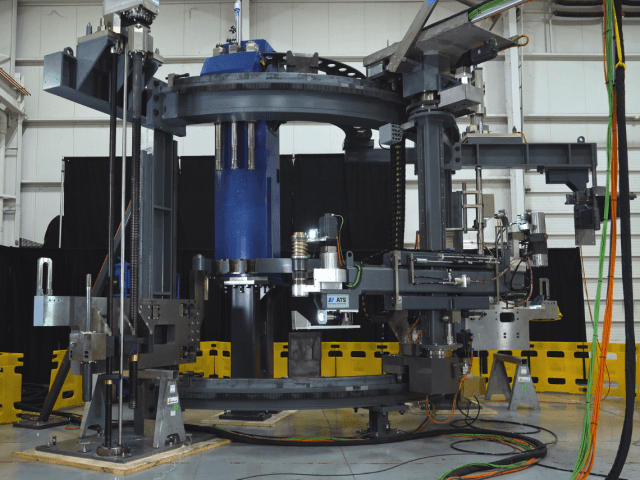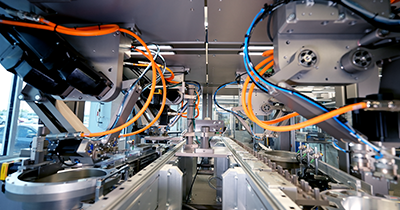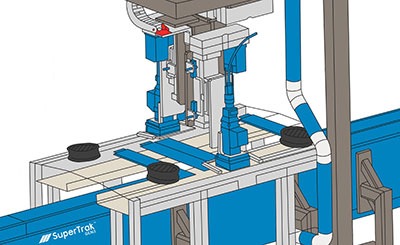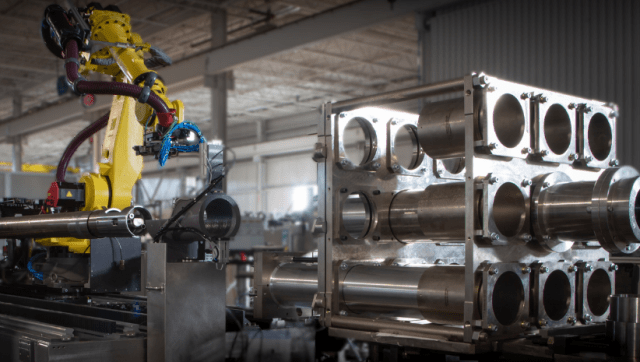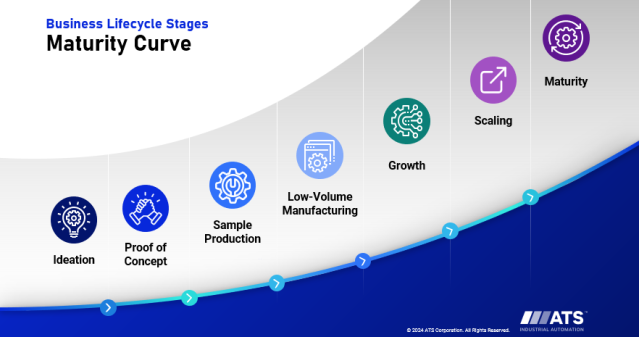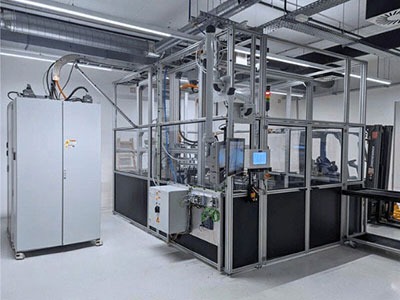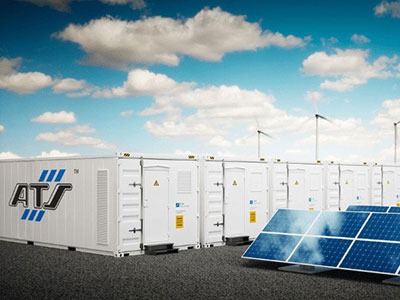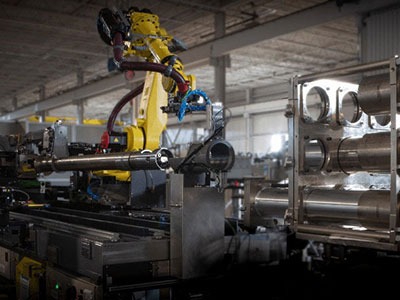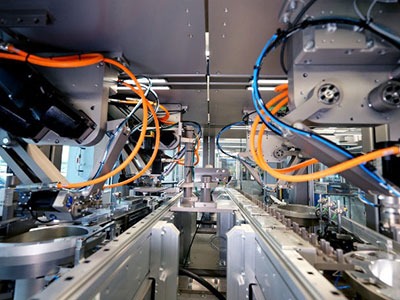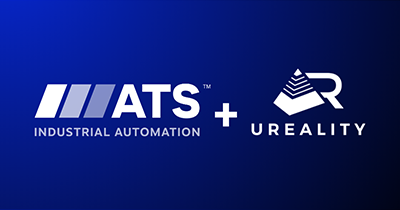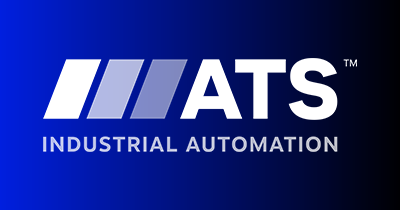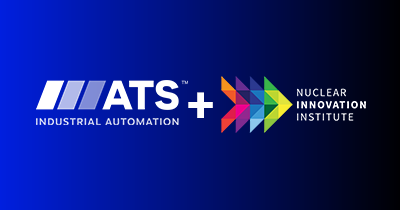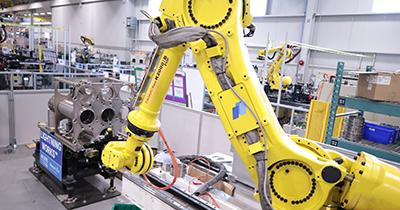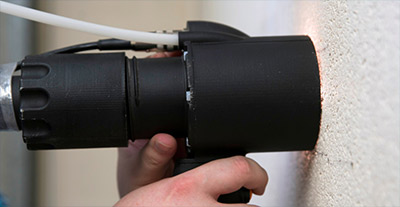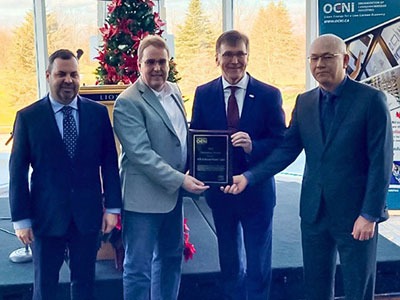March 26, 2024
Energy markets are working towards a zero-carbon future, and battery energy storage systems (BESS) have emerged as a pivotal technology that can be used across the energy landscape, leading to increased innovation and investment, with almost 90% of new battery patents focused on electricity storage.
But how do you turn today’s battery ideas into tomorrow’s gigafactory? Whether you are a start-up or an established company, bringing a new BESS to market and scaling production is a journey, and companies need to achieve key milestones along the way.
In this video, we explore the lifecycle of a BESS company from ideation to gigafactory. We examine the seven stages, from idea and design viability to creating samples, developing a pilot line, demonstrating manufacturability, and full production, and discuss the challenges associated with each stage.
Hear how companies have navigated each stage and successfully transitioned to gigafactory.
Topics covered:
- When to engage with consulting and automated solution partners.
- The importance of battery testing and validation in hitting key milestones.
- Why design for manufacturing should be considered early in the lifecycle of a company.
- Transitioning from a manual manufacturing process to a highly automated process.
- How to leverage data and digitization in scaling manufacturing.
Watch “What It Takes to Scale Grid Battery Manufacturing, From Lab to Gigafactory” Webinar Now
Speaker

Speaker
Rob Faulhammer
Vice President of Sales, Energy & Consumer
Transcript
Andy Colthorpe
Hello everyone, and welcome to today’s webinar with ATS Industrial Automation, where we’ll be looking at what it takes to scale the mass production of batteries from laboratory to gigafactory. I’m Andy Colthorpe, editor of Energy Storage News and deputy editor-in-chief at Solar Media. Energy in today’s world is becoming increasingly defined by electrification and electrification of the grid; buildings and transports will rely more and more on batteries and, crucially, access to well-designed batteries that can be made to topnotch quality time and again.
Ever since Elon Musk coined the word gigafactory back in 2013, the scale of mass production of batteries required to meet global electrification challenges and enable the massive uptake of renewable energy has been apparent. Frankly, media and investors alike can’t get enough of this concept.
In our recent webinar with Clean Energy Associates, we looked at some of the risks and pitfalls associated with battery energy storage system production. In today’s session, we’ll return to the drawing board and learn more about how a battery gigafactory dream can become a reality. Both the opportunities and challenges ahead create fascinating food for thought.
With the vast majority of the batteries set to power our world in the coming years yet to be made and even the production lines that will make those batteries yet to be made, this matters more than ever. One exciting recent battery storage supply chain dynamic is the rise of production lines dedicated to stationary energy storage cells, modules, and packs. Not so long ago gigafactories were being announced by the dozens of gigawatt hours almost exclusively with serving the electric vehicle sector in mind. Now, we can hardly be jealous that electric vehicles command a much bigger share of the market overall. After all, it isn’t likely we’ll all be needing 50-kilowatt hours plus batteries in our homes the way we might in our cars anytime soon, and grids scale energy storage is effective precisely because it can be deployed strategically in the places where it offers the most value.
But as we heard in a recent interview with Kevin Shang, Energy Storage Supply Chain Analyst with Wood Mackenzie where, once manufacturers might separate off a few production lines away from serving EV customers to focus on the battery energy storage system market, dedicated stationary storage production sites represent a growing trend.
In today’s webinar, ATS Industrial Automation expert Robert Faulhammer will discuss what that process looks like and how you can successfully get your ideas off the ground and into the gigawatt-hour scale. As always, interaction with you, the audience, is really important to us. Robert’s presentation will include two quick polls for you to take part in, and the session will, as always, conclude with an audience Q&A section.
You can put your questions in the tab you can see on the right-hand side of your screen. We’ll try and answer as many of your questions as possible in the short time we have allotted. Still, ATS Industrial Automation representatives will be happy to reach out to you and reply to any that we don’t have time to cover in this session. Lastly from me, today’s webinar will be recorded and made available to registrants on-demand at Energy Storage News. So, with that out of the way and without further ado, it’s my great pleasure to hand you over to our guest speaker today, Robert Faulhammer, over to you, Rob.
Robert Faulhammer
Thank you very much, Andy; I appreciate the introduction to today’s webinar. If we start our webinar and we start our journey, a couple of words to myself. I am the Vice President of Sales at ATS Industrial Automation. I’m based in Cambridge, Ontario, Canada, and I have been involved in the automation space for about the last 35 years or so. Battery automation has been a part of my life for the last half dozen or so years. I believe that together with the ATS Automation team, we bring significant experience to the automation discussion. As active as the battery industry is these days, I think that we can make a difference to companies looking to scale to gigafactory.
Let’s look at what we’re going to cover in today’s webinar significant amount of content that we’re going to go through. We’d like to discuss the journey of a battery company from idea to a gigafactory scale manufacturer. Along the way, we’ll address equipment and service possibilities to support the battery company’s primary technical, financial, and organizational needs. We’ll introduce a seven-stage model and use that to frame our discussion. The elements discussed in the associated ATS Automation offerings have been shown to reduce risk more quickly, optimize product design, and provide critical support to often-stretched teams.
We’ll talk about when to engage with consulting and automation solution partners. We’ll talk about the importance of battery testing; it’s not just about assembly. It’s how you make sure you’re producing a good product; we’ll talk about why design for manufacturability is a critical milestone around the journey of a battery design to make sure that cost per kilowatt hour goals can be achieved, and we’ll talk about transitioning from manual processing to more highly automated processes and some of the steps and the pitfalls in that journey. We’ll also talk a bit about leveraging data and using digitalization to scale your manufacturing.
Who We Are
So who we are: ATS Automation is a 46-year-old $2.2 billion publicly traded industrial automation company. We have many different verticals. The division that I am in is ATS Industrial Automation, where we focus on mobility, nuclear and energy, and consumer applications.
In the last half dozen years, the focus on batteries has driven a lot of our business and is an area where we’ve established significant expertise. We are a publicly traded company, and if you’re interested, more information on ATS Automation can be read on the web at www.atsautomation.com. Please feel free to reach out to me or to any of our front-end team, who would be happy to engage in the discussion with you.
Battery Energy Storage Systems
We’re now going to switch to battery energy storage systems and the importance of battery energy storage in a zero-carbon future. As part of our CO2 emissions reduction goals, battery innovation is happening in many different areas. In mobility, stationary grid storage, and fuel cell applications, governments are putting funding mechanisms in place to fuel battery development and commercialization. Battery development itself is drawing significant investment, and managing the risk of deploying that capital is a critical capability. From a recent report, 90% of patent activity in the new energy space is involved in battery technologies, and critically, to get these innovations to market, all manufacturers need to put in place product development and manufacturing road maps to assure success.
Battery Manufacturing is Not That Easy…
So battery manufacturing is not that easy. I’m sure that most on the call realize that battery manufacturing is not that easy. The challenges of scaling up manufacturing are significant no matter what the product is. Very few manufacturing scale ups do we see the volume of product design changes throughout the equipment build cycle like we see in the battery space. Properly deployed automation has benefits, improving product quality and controlling costs.
In the recent study by Clean Energy Associates, Andy highlighted an interesting statistic that 44% of inspected energy storage units had thermal management system quality issues. In comparison, 50% of all defects were weld defects. To truly understand the size of the issue, you really need to dig into the details of the report, but it points out that there’s a need in the industry to focus on manufacturing approaches to maximize quality. Enlisting an automation partner like ATS Industrial Automation, who understands the processes, tooling, and software, can help to improve this.
ATS Industrial Automation In Battery Assembly
We’ll now look at ATS Industrial Automation and battery assembly and where we come from. So, ATS Industrial Automation has been involved in battery assembly for many years. We have delivered approximately 110 battery lines spread across mobility and stationary applications. This includes several projects in cell automation and numerous projects in module assembly, and we’ve also completed a number of pack assembly lines.
The great variety in the range of products that we’ve assembled includes cell-only, cell-to-module configurations, cell-to-pack configurations, and anything in between. In addition, our thoughts and approaches are informed by numerous other discussions with industry players and engineering and management staff at customers in the industry.
With these experiences combined with 46 years of assembly automation history, we’ve learned that the battery manufacturing strategy must balance production volume, reasonable automation levels, capital cost, process quality, and the likelihood that the battery design will change. ATS Industrial Automation can help manage these trade-offs via a manufacturing scale-up strategy. We now look at the journey from energy storage to gigafactory.
The Journey from BESS Idea to Gigafactory
In the next slides, we’ll present a manufacturing evolution framework that is helpful in understanding how the needs of various stakeholders can be addressed when developing a multi-year path to a gigafactory. But there’s a lot of detail to be covered here, and we’ll we’ll be going through all of it.
Battery Manufacturing Maturity Curve
The model we created as we examined the journeys of many of our customers is a seven-stage journey. This can be sliced and diced in many different ways, but it provides a framework for understanding the challenges that individual battery manufacturers face on a day-to-day basis.
It starts at initial ideation and transitions through increasing production volumes, more stable battery design, scaling, and the maturity phase, where the gigafactory manufacturer is in production.
Poll Question 1: What Are Your Company Needs?
Andy had mentioned that we were going to do a couple of survey questions throughout the webinar. As I’m going through my next remark, I’ll pass it to Andy to take us through our first survey question. Maybe some of this will then inform the rest of my remarks in the presentation.
Andy Colthorpe
Indeed, thank you very much, Robert. So yes, everyone can respond to the poll. You will see that the options have popped up on your screen.
So yes, what are your company’s current needs?
- Is it to design, test, and validate battery functionality and manufacturability?
- Or do you need to provide low-volume product samples to customers with small-scale equipment?
- Or you’re a little further in that journey and need to acquire high-volume automated equipment to drive volume and scale.
- Finally, you may not be in any of those categories. You’re not a manufacturer, but your contract manufacturer is ramping up volume production, and you need to know more about that.
You can submit your vote through the popup that should have come up on your screen there; alternatively, throughout, you will see that the polls are available on the right-hand side of your screen next to questions. So please do go and respond to that. We’ll come back to the audience’s responses to those in a couple of minutes, a couple of slides time, but this might also be fun to have another look when we get to the audience Q&A. So yeah, Robert, back over to you, thanks.
Robert Faulhammer
Okay, great thank you, Andy.
Trends in Battery Company Evolution
So, if we look at the seven-stage model to gain some understanding of the four middle stages and how we came up with the range of situations that battery manufacturers were going through, we really look at the four middle stages as those critical stages that form the basis for manufacturing.
There are common trends that emerge. There was no one-size-fits-all approach in all of our interactions; cost per kilowatt hour seems to be the universal driver, and investors are a key part of supporting the journey.
Aspiring manufacturing companies have a multi-year development path that must balance five key factors. The first is product design evolution, battery designs are rarely stable capital availability, government regulations, market, and customers, as well as manufacturing capability and capacity. As we look at the graphic above, then, there are clear directions in manufacturing and product maturity. So, the four middle stages in the curve are sample manufacturing, low manufacturing, growth, and scaling. We initially have interesting and good battery ideas for the battery design functionality and stability. The iteration works, but it’s still in flux. The battery design becomes more mature and more manufacturable through to when we’re in the scaling mode. A much more stable battery design is what we’re dealing with. The manufacturing focus becomes a unique cell or a unique special sauce in the battery at the beginning and then as we advance through scaling. Then, there’s more focus on the manufacturing strategy around the cell, module, pack, or whatever the final configuration is that the end user will want to have as a final product.
The automation process maturity is non-existent at the beginning, and as we go through to scaling and gigafactory it becomes very mature. The automation level that we see is, first of all, very manual. It then proceeds through increasing levels of complexity and automation added to the story through to high throughput full automation once we get to gigafactories. So, through this evolution, the need for capital increases exponentially. The efforts to secure that capital change as initial investors are augmented by later series investors and institutions, all of which have different risk profiles and objectives. Our efforts to support customers and risk management discussions become a crucial part of the manufacturing strategy evolution.
Poll Question 1: Results
Well, now, do we have any results from the poll questions, Andy, that we can talk to? We most certainly do.
Andy Colthorpe
We most certainly do. And I think most exciting of all is that the majority of attendees have actually responded to the poll, so that’s a pretty good sample size. Now, to run you through these answers very briefly.
So, by far, the biggest wedge is that 57% of respondents are not manufacturers, but their contract manufacturers are ramping up volume production. That said, it’s a pretty significant wedge. About a quarter of you said that designing, testing, and validating battery functionality and manufacturability is the current need of their company, and then third and fourth.
Acquiring high-volume automated equipment to drive volume and scale, so that’s not an insignificant number of you. 12% said that they need it to acquire high-volume automated equipment. Finally, 6% of respondents said that providing low-volume product samples to customers with small-scale equipment is their greatest current need.
So, broadly in line with what you might have expected there, Robert?
Robert Faulhammer
Yeah pretty good mix of people who are along their journey, and it’s great to see that that a variety of interest on the webinar today. We have some things to talk about that will appeal to most of you as we go through the next slides, so thank you for taking part in that poll. I think it adds to the value of the discussion here.
Lifecycle Stages of a Battery Manufacturer: Ideation
The first stage in our journey is ideation, and we term it ideation because we have an entity where there are developments, ideas, and sciences that come out of various universities or out of the work of individuals and happen to be directed at the battery space. Manufacturing strategy is not a focus of the efforts at this point.
The company and the entity have first started up, and I don’t believe that there’s a huge focus on how you’re going to manufacture it, but rather, does the core product has potential?
Lifecycle Stages of a Battery Manufacturer: Proof-of-Concept
If we then jump to the next phase, we call the proof of concept stage. So, at the proof of concept phase, the battery company’s initial focus is still on the product and developing a product that achieves its performance objectives. The team is very small, and it does not have a breadth of capability; it has a very specific capability, and it’s experts in designing the battery and its capabilities, but manufacturing depth just isn’t there. Lacking in industrial engineering and supply chain depth at this phase.
The main challenges are balancing the need to design and validate the product, as some of you indicated on the poll questions while raising capital and thinking about making samples for validation and early customers. These are push-pull scenarios where they’re pulling the early-stage company in many different directions. When we get involved at this stage, we bring design for manufacturability advice to the customer and initial test and validation planning. We may provide lean automation or hand tools at this phase as well.
So it’s very much dependent upon the state where the company is in and, where some of the gaps are, and what we can do to help in that scenario. We may also provide significant input into planning for investor presentations.
The money raised at this point may end up being needed to carry the company through low-volume production. Even in the initial phases of product innovation, direct feedback regarding battery performance under a variety of conditions is key. The ATS Test division can provide discussion or advice on cycle-time-appropriate test solutions for electrical, leak, and other battery testing that can be scaled over time. So that’s the proof of concept phase.
Lifecycle Stages of a Battery Manufacturer: Sample Production
If we then move into the sample production phase, then we end up with an evolving set of challenges. At this phase, the battery company has made some samples. It understands many of the assembly process steps but needs to prove to investors and customers that the battery can be made reliably. Through this phase, the battery design is still evolving. It may still have technical challenges and, almost universally, will require cost reduction. The customer specifies and procures a low-volume process intent pilot line whose output may be one-tenth of the eventual low-volume line product design iteration continues while mainly manual tools are used to move the product from step to step and to complete battery assembly.
For processes that need automation for low reliability the company may need to buy in advance a process station for later stages. Examples of this are laser welding, wire bonding, or heavy lift ergonomic assists just because of the nature of the battery product at this point in time. Key challenges that we have are, first of all, battery performance, battery process stability cost, and the need to continue to reduce cost. Time, the limited team bandwidth, managing that time frame and managing expectations of management and investors becomes a critical challenge. Building the internal team from startups with very few employees and team members through to full growth gigafactory manufacturers is a major challenge; there’s a long road in building that internal team. So, this is a great stage of your evolution to engage with ATS Industrial Automation.
Key offerings at this phase might include a design for assembly assistance manufacturing equipment, spec generation, product testing advice, and test hardware, as well as upgradeable automation for processed material handling and testing.
Lifecycle Stages of a Battery Manufacturer: Low-Volume Manufacturing
If we then get through this sample production phase into low volume manufacturing at low-volume manufacturing, we will have another evolving set of challenges. At this phase, the target battery concept is proven. The company has established least minimum performance requirements, the cost per kilowatt hour cost down curve is known, and several samples have been made for target customers. The process of making the battery still needs adjustment, but most process steps have been proven viable. First, small orders may or may not have been received the company needs to buy low-volume, more automated manufacturing equipment. This, in turn, causes cash burn to ramp up, and quite often, new investment is required to maintain the business.
Critically, new customers may ask the battery startup to prove manufacturing capability before placing an order. Where the process is precise or complex and where low-volume tooling may not be conclusive, a higher volume line may be procured earlier than would initially be ideal. Manufacturing focus now shifts to producing low volumes of product in a consistent manner. While OEE may be lower than the target, improving quality levels and process capability become a focus. Test instruments need to fully test battery functionality and assembling integrity. Key gaps at this phase are engineering and project management bandwidth and the unknown nature of how long it will take to stabilize the assembly process. At this phase your automation partner works with you to define and deliver appropriate test and assembly equipment. Planning for future scale is initiated and ATS Industrial Automation can lead these discussions. Line data management software such as ATS Illuminate becomes key to understanding process capability throughout the journey. We now shift to we’ve got the low-volume manufacturing line in place, and we now shift to the growth phase.
Lifecycle Stages of a Battery Manufacturer: Growth
This phase is about confidence. Confidence that the product design works, the manufacturing process is mostly understood., market demand is there, and investor capital to fund the expansion is available. The focus of any new high-volume automation needs to be driving cost per unit down, maximizing OEE, and managing the inevitable battery design changes. The company needs to procure the first high-volume line to set the stage for gigafactory production.
To get the first high-volume production line in place, several issues need to be addressed.
- Is the assembly process stable enough to justify an expensive assembly line?
- What is the right line output target considering market demand variability?
- What labor content provides the right mix of cost control and flexibility?
- What’s the impact of the current concept on scale plans, and are there facilities and site location challenges?
- Is the battery company organization structured to properly support large-scale equipment procurement?
- How do the growth plans for cell, module, and pack intertwine with what is needed immediately?
At this phase, we need automation equipment configured to address product design maturity process control for quality and automation versus labor trade-offs using digital tools like simulation digital twin and line data management to optimize line solutions and a focus on turnkey solutions of assembly test and process tools in one complete line. And we need to provide product management and operational processes to deliver equipment to aggressive schedules. So, at the end of the growth phase, we now go through a stage that we term scaling.
Lifecycle Stages of a Battery Manufacturer: Scaling
At the scaling stage, the true gigafactory has arrived. The product and customer markets are established, financing is secured, and the focus now shifts to meeting high-volume customer commitments.
The approaches to scaling can take several forms, which we loosely categorize as replicating smaller increments of capacity. It could be from the first line that was procured in the growth phase, or we configure the gigafactory scale equipment as a single, very high volume line with optimized station counts at each process step with extensive material handling infrastructure.
Every customer condition is unique and must be evaluated by engineers; as before, battery design changes may still be a concern. While the company is fully focused on high-efficiency production material flow, and zone interfaces become a major focus involving buffers, AGV integration, and end-of-line packout. The delivery of a turnkey automation concept considering all aspects of overall system performance is critical. The digital landscape is optimized with the digital twin forming the backbone of further line enhancements.
While line data management systems are used to understand and optimize production, and timing of financing often plays a role in which the deployment option or the deployment is is proceeded with. In most scenarios, there’s usually a phased approach, which is used to properly manage capital while we scale to gigafactory. In all aspects that are discussed above, ATS Industrial Automation has the experience and makes what we believe to be an ideal partner to have those discussions and support you as we go to scale manufacturing and the gigafactory. So once we evolve through the scaling stage we now end up in maturity.
Lifecycle Stages of a Battery Manufacturer: Maturity
At maturity, production is in full swing challenges are now consistent with many other billion-dollar production businesses. OEE becomes a key operational driver, while battery designs may still change regularly. ATS Industrial Automation is an ideal partner to help the battery company in this environment. We have experience establishing an environment for managing this change while allowing production to continue in line with customer needs. Software tools provide data visibility, such as the ATS Illuminate software. Line technology upgrades can be managed by our team working collaboratively with you and a full suite of Global Services offerings, including training, spares, line upgrades, reliability engineering, and onsite staffing, support, and holistic OEE coverage and improvement over time.
So we’ve gone through the maturity phase, and essentially, the battery manufacturer has now achieved gigafactory capacity and capability, and the business has reached its ultimate objective. So, as we go back to understand where we came from in the journey, we started off with the maturity curve, talking about ideation, true proof of concept, sample production, low-volume manufacturing, growth, scaling, and finally, maturity. It’s an incredibly exciting journey. It’s fascinating, it’s stressful, and it’s rewarding. The BESS space is very dynamic and very motivating for, I think, all of us, and it’s it’s a great path to be on. ATS Industrial Automation can support your company in many different ways, and the dialogue is needed to figure out where exactly we can take that interaction.
Poll Question 2: Which Stage Do You See Your Company At?
So we now get to the second poll question, and I’ll pass it back to Andy to manage us through this poll question.
Andy Colthorpe
Yep, thank you very much, Robert.
Yeah I totally agree that’s a really exciting space I’m not working in the battery energy storage space as such I guess. I’m in publishing but yeah it’s a really exciting one to be writing about certainly and learning about. So folks, which stage do you see your company at? So you’ve got seven options here that have come up in the popup both on your screen and also on the right hand side tab as well.
- So are you at the very earliest ideation stage?
- Have you moved already to prove your concept?
- Have you perhaps already begun sample production?
- Or are you already at low volume manufacturing?
- Or are you a little bit further along than that, and you’re at the growth stage?
- Have you already passed that growth stage and gone into scaling?
- Finally, are you already at maturity at a stage of mass production of your devices?
So yeah, please vote, and we’ll revisit the poll results briefly just as we start the Q&A. Then, we’ll also have another look as we conclude the session today.
Robert Faulhammer
So, while we’re all going through that, remarks wouldn’t be remiss without thinking about what makes a good automation or technology partner and what sorts of questions we can ask to determine the right fit.
What Are the Questions to Ask a Manufacturing Partner
A couple of questions to consider:
- Does the partner understand the core technologies involved in battery manufacturing?
- What internal organizational gaps will the partner be asked to fill?
- Is the partner accustomed to delivering automation on a turnkey basis?
- Does the partner have line integration and control integration capability? Every piece of manufacturing automation has a mechanical component, a process component, and a significant controls component, and all of those need to be considered.
- Does the partner have sufficient scale for gigafactory equipment requirements?
- Are there services that the partner can provide that might defer investment in acquiring those capabilities internally?
So significantly complex decision or discussion is to be had with partners to understand your journey. And with that, we’ll be going into Q&A in a second, but thank you very much for listening as we go through the the seven-step journey and some of the factors that need to be considered. There, we look forward to further dialogue with you as you continue down that battery manufacturing journey. I will note that I discussed several key terms that may or may not be clear in terms of their meaning, but feel free to reach out, and we’d be happy to have further dialogue around any of those issues.
So I’ll pass it back to Andy. We’d be happy then to see how the poll results turned out and to engage in an interactive question-and-answer session.
Poll Question 2: Results
Andy Colthorpe
That’s fantastic. Thank you very much, Robert. Yes, indeed, once again, a majority of the audience was good enough to respond to the poll.
So, what stage do you see your company at?
So the biggest wedge of responses was, in fact, the earliest stage, number one ideation, so 41% of respondents are ideation. In not such a close second, we have respondents, 15% of them, to be precise, at the growth stage. Following that, proof of concept, sample production, and volume manufacturing are pretty close together, so response number two, proof of concept, 12%, sample production, 11% of the audience that responded, and low volume manufacturing, 10%. Then, slightly smaller shares of the audience are a bit further along in that journey, so 7% of respondents to the poll are at the stage of scaling their company, and 5% have already reached maturity in their production.
So yeah, again, Robert, kind of what you might have expected.
Robert Faulhammer
There is a very good mix across the journey, and it kind of echoes, I think, the level of excitement and the financing of the political winds behind the journey, and it echoes that a lot of people have an interest in the space, a lot of ideas of how to proceed. Also, if we think that the seven-stage journey takes multiple years, then it would indicate that we have a pretty good spread across the people in the stage where they perceive their company to be. So it’s a very interesting poll result, and thank you for everybody responding to the poll.
Q&A Session
Andy Colthorpe
Awesome, and yeah, to further the audience interaction piece, we had a lot of great questions from the audience, actually, Robert.
Have you seen them coming in the questions tab? However, there are still some coming in. So, I think you know we said we are not going to have time to deal with well, even really a fairly small percentage of these today within the session. Still, ATS Industrial Automation, I’m sure, would be more than happy to help with a lot of these, but let’s get to it; let’s try and tackle some anyway, shall we?
Is There Any Way to Decrease the Time Involved in Completing the Scaling and Maturity Phases?
Thomas asks if there is any way to decrease the time involved in completing the scaling and maturity phases. Thomas notes that 7 to 10 years from inception create challenges for investors in reaching an acceptable IRR. So Robert, in your opinion, is there any way to decrease the time involved?
Robert Faulhammer
That’s a great question, and if we look at the overall time frame of the building and procuring the automation in a typical assembly line, in the early phase, deliveries are faster. Once you get into scale lines, then you have to be calculating with a year of lead time, and so if we look at the number of iterative steps at a year of lead time in each of them, then you are essentially, you’re adding up the stages to be a several year journey.
In addition, in our experience, the stage that you don’t want to skip is getting a battery product and a manufacturable product design and ensuring that the process involved in making that battery is firm and stable. To scale a process that is not reliable just creates more problems and more bottlenecks, which becomes a challenge. Having said that, an overall approach to deliver on the gigafactory scale more quickly, there have been several approaches that ATS Industrial Automation has used over time.
As we figure out the project plan, we take large systems, divide them into risk and non-risk components, and, based upon those risky components, then invoke different methodologies in order to take those off of the critical path. By doing so, we feel that we can combine some of the steps and by combining some of the steps with an accurate understanding of the risk behind the program, we can come to an agreement with the customer on what the right approach is and and how we go from that. But time is definitely a critical factor, and everybody would like to deliver faster. We will be happy to work with you to understand those time constraints and how we can shorten them as much as possible.
How Does the Manufacturer Know When They Are Transitioning From One Lifecycle Stage to Another?
Andy Colthorpe
Fantastic, and Nol asks, or rather, Nol begins their question by saying that the life cycle stages that you ran through, Robert, are very informative. But how does the manufacturer know when they’re transitioning from one evolution stage to another? They do not seem readily visible. So, what triggers should be set to recognize the progression through those different stages, perhaps?
Robert Faulhammer
Yeah, great question, and importantly, the seven stages were set up to understand certain attributes and characteristics of where in a journey a customer is. It’s a combination of battery design maturity, investor appetite, and how much capital has been provided.
It’s a matter of whether there is a customer base for the product already established, and so if you combine the four factors of technology. So battery design, process technology, financing, and market, if you put those four factors together, then you can see a progression going from ideation up through to scale.
So I like the question. It’s not black and white, and it’s a matter of where you feel you are on that journey. Throughout some of the dialogue then, there also were factors that were overlapping. For example, some batteries may end up going from low-volume production straight up to scale based on the battery product. Whether it makes sense so, I think that which stage you’re at is important to define but not as important as looking at the four factors that go into how we assess what stage you’re at and addressing each of those four factors for any issues that that you may need to solve.
What Are the Considerations for Determining a Location for a Battery Manufacturing Facility?
Andy Colthorpe
Okay, terrific, so let’s see if we can get a couple more of these done if you still have time there, Robert. Janani was asking what the considerations are in determining a location for the facility. They went on to ask, are specific parts of the world better for battery manufacturing? And I don’t know if we want to get into the geographical details of that necessarily. Still, perhaps in general terms or, Robert, what are the considerations for determining a location for the facilities?
Robert Faulhammer
So, I can answer the question based on our experience. Our dialogue with customers, as well as our own experiences around what it takes to properly maintain automation, so critical factors there often involve politics and incentives. Other critical factors to consider, include the end-use market and, most critically, that once you go to gigafactory scale, you’re looking at a whole volume of very sophisticated equipment, if it has issues and needs in terms of mechanical controls, process technology that to be supported on a regular basis and the location of the gigafactory in relation to where you have ready access to those highly skilled people that are going to run the equipment needs to be considered. Additionally, then you have access to labor actually to run the equipment, which is important as well. Placing all of these considerations on a matrix would help justify which location gets preference. I don’t think there’s any one location around the world that makes more sense than another, and it’s really a balance of factors across all of those inputs that would determine where your best bet is to put that gigafactory.
What is the Cost of Taking Production from Ideation to the Small Scale Prototype Phase?
Andy Colthorpe
Okay, terrific, and Info asks, what’s the cost of consulting with ATS Industrial Automation in taking you know production from ideation to the small-scale prototype phase? Now, I understand that perhaps you might not want to talk about specific numbers in a public forum such as this, Robert, but you know in terms of what it might cost. In terms of the overall CapEx, I guess, or you know again how however you want to approach this question, but I think it might be interesting for those that are looking to go from ideation to the early stage prototype phase.
Robert Faulhammer
Yeah, and so thank you for the question; I guess I would answer that as it depends, and the discussions that we have with customers are there’s no particular script, there’s no particular shopping cart where you pick option A, B, and C and that’s how we how that’s how we propose initial engagement the range of engagement goes all the way from let’s have an initial dialogue and let’s understand where you are in the journey and we together might decide that you know what it’s just it’s too early yet.
We might provide some simple advice, and then as you go further along in your journey, then, we quote studies, either on a firm price basis or we can quote those engagements on a time material basis and so it really depends on the nature of what you’re looking for. Critically is that we’re supporting the journey to get you to being a gigafactory, and as we start to establish a partnership with you, that partnership sentiment is a part of how we’re interacting and how we move forward together.
What Role Could ATS Industrial Automation Play in Improving the Safety of Both Factories and the Finished Batteries Themselves?
Andy Colthorpe
Terrific, okay, thanks, and I think the last question for today because, unfortunately, you know, we have run out of time, and I would absolutely love to keep going through these. I imagine maybe you might as well, but Adam asked, and I think it’s a question more than one audience member has asked about safety and the safety aspect of batteries. So Adam asked what role ATS Industrial Automation could play in improving the safety of both factories and the finished batteries themselves. And you know, if you’ve got any general commentary, in terms of making batteries safely at a mass scale, that would be a great note to finish up.
Robert Faulhammer
Yeah and great question and safety in the battery space is multifaceted. It’s everything from how do you make the batteries safely in the battery factory, all the way through to how do you then have a product design which is in the field, which is safe. And so throughout those journeys, ATS Industrial Automation has experience with many different lithium-ion battery projects, and we have experience with battery programs with different chemistries and so as we go through that journey. We are working with you and your team to understand the manufacturing footprint and equipment to ensure battery safety in the manufacturing operation is considered.
We will work with you on risk analysis to understand what that means in the battery facility so that we can come up with a solution that is safe to manufacture and that there’s, we’re mitigating any of those potential risks due to the inherent battery chemistry. The other piece of safety becomes occupational safety and designing and building pieces of equipment that are safe to operate and where the equipment itself, if it’s not designed and built in a safe manner, is inherently risk to the people working the line. ATS Industrial Automation designs and builds equipment to global safety standards. We deliver equipment to North America, Europe as well, and Asia, and we are compliant with or exceed the local occupational safety regulations and rules and make sure that using risk assessments and other tools any, sort of injury and damage to employees is absolutely mitigated. It’s the most important thing that we do every day.
In terms of ensuring that the safety of the end battery is guaranteed, we can provide input based on what we’ve seen in the past. Still, ultimately, the individual company needs to understand its chemistry and product attributes to ensure the design is safe. We can consult where we can and provide that input where we can, but we typically will then advise if there is a separate issue that a different entity would be involved in to consult on. We have access to companies that could consult in a given technology, and we will, but essentially, we need to stay in our own swim lanes and make sure that we’re not representing a capability that is better fitted to somebody else.
Andy Colthorpe
Excellent, okay, yeah, with that. Unfortunately, as I say, we’ve run out of time, but it’s been a really informative session and been brilliant seeing the questions coming in from the audience and, as I say, seeing the polls as well and hearing what people’s priorities are the stages that are at so yeah I mean I wish all of you all the best in your gigafactory journeys. I hope they go amazingly well, and yeah, all that remains is for me to once again thank the audience, most of all, for joining, but also to thank you, Robert and ATS Industrial Automation, for bringing this topic to us today and presenting your expertise.
Robert Faulhammer
It’s great, and I’d also like to thank all the audience who took time out of their day to attend. It was great having this chat with you and Andy. Thanks very much for organizing the session. It was great, and thank you to all.
Andy Colthorpe
That’s fantastic, you’re very welcome, Robert. Okay, everybody, we’ll see you again soon. Thank you very much bye-bye.
Every project is unique. Allow us to listen to your challenges and share how automation can launch your project on time.



